Since time immemorial, food has become a medium to bring people together and create a sense of connection. As people came together they brought their food and eating habits, shared with each other and that promoted growth of culture. If we think about our own Sulaimani Tea, the Chinese traders brought the tea leaves, the Arabs brought in the infusion techniques like adding black peppers and dates to it, we, the Keralites tweaked the Sulaimani Tea preparation by adding locally grown spices like cardamom, cinnamon, ginger and lemon. With this little local adaptation, this tea preparation became an intangible part of our cultural heritage.
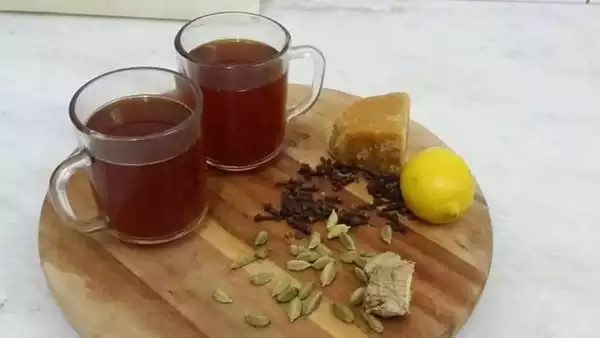
Sulaimani Tea (P.C: Times of India)
Food serves as the intangible cultural heritage all over the world. It’s the way of life that has been passed down from generation to generation. With a cooking technique, the wisdom of generations also gets passed down through generations. Not only cooking technique but the use of spices and local ingredients, seasonal food preparations, way of eating the food, all speak volumes about our history, geography, community and cultural heritage. It is rightly remarked by Deborah Cater that ‘You have to taste a culture to understand it’. So, to truly understand the essence of Kerala’s culture you have to taste our local cuisine.
(Also Read: Kerala - A Food Lover's Paradise)
Let us see in what ways, the Kerala Cuisine serves as an illuminating window into Kerala’s rich and diverse culture:
1. Historical Influences:
Spice Trade Legacy: Kerala, renowned as the "Land of Spices," has a history intricately tied to the spice trade. The abundant use of black pepper, cardamom, cinnamon, and other spices in Kerala’s cuisine is a testament to its central role in global trade and cultural exchanges over centuries. These spices were highly sought after, leading to the establishment of ancient trade routes and interactions with various civilizations. The flavors of Kerala's dishes, rich and aromatic, reflect this vibrant historical backdrop, where each spice carries stories of exploration, commerce, and cultural mingling.
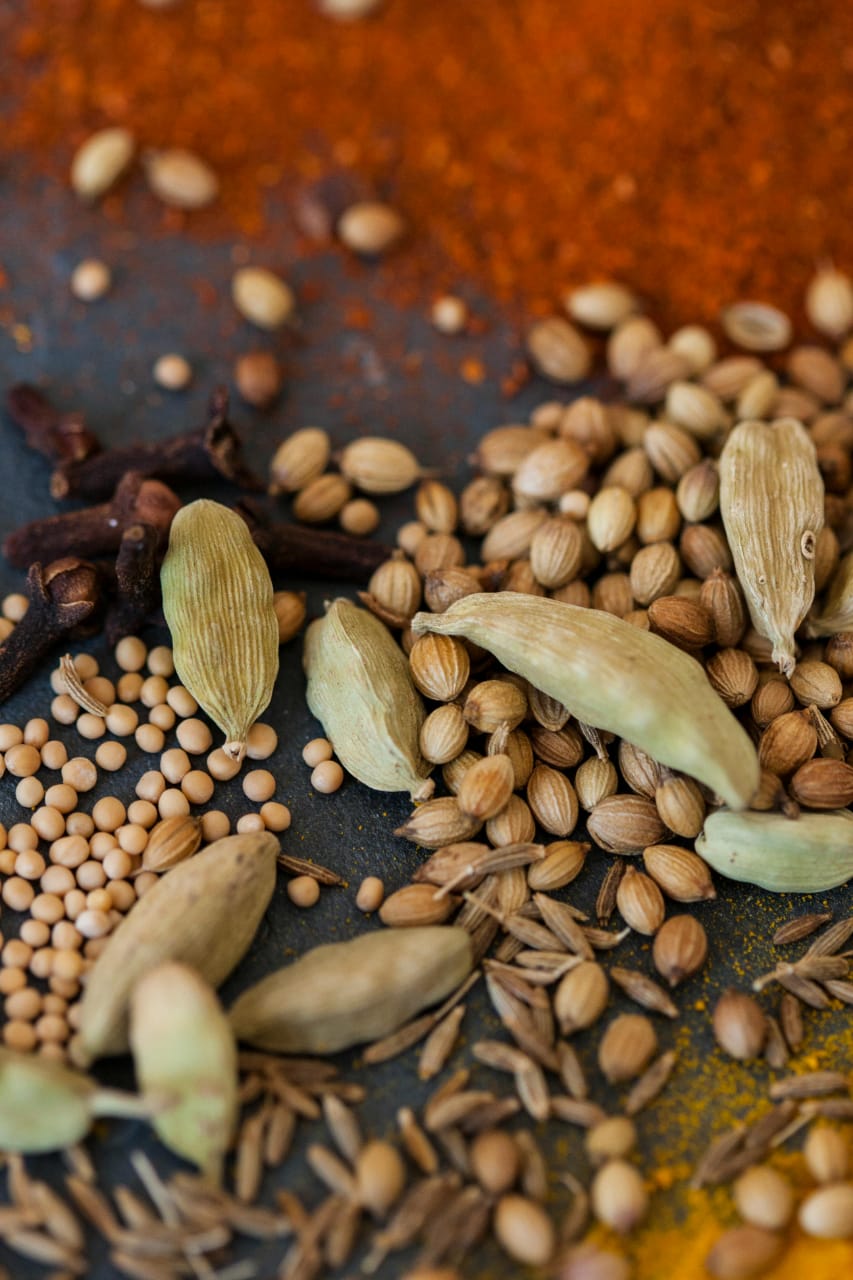
Whole Spices used in Kerala cuisine
Colonial and Migrant Impact: The arrival of diverse communities, such as the Arabs, Portuguese, Dutch, and British, brought new ingredients and culinary techniques to Kerala. This blend is most evident in Syrian Christian cuisine, which melds Western and local flavors, showcasing European missionary influence. Dishes like appams and stews incorporate these elements, creating a unique culinary tradition that highlights Kerala's openness to and integration of external influences. This fusion not only enriched the local cuisine but also tells a broader story of Kerala’s adaptive and inclusive cultural identity.
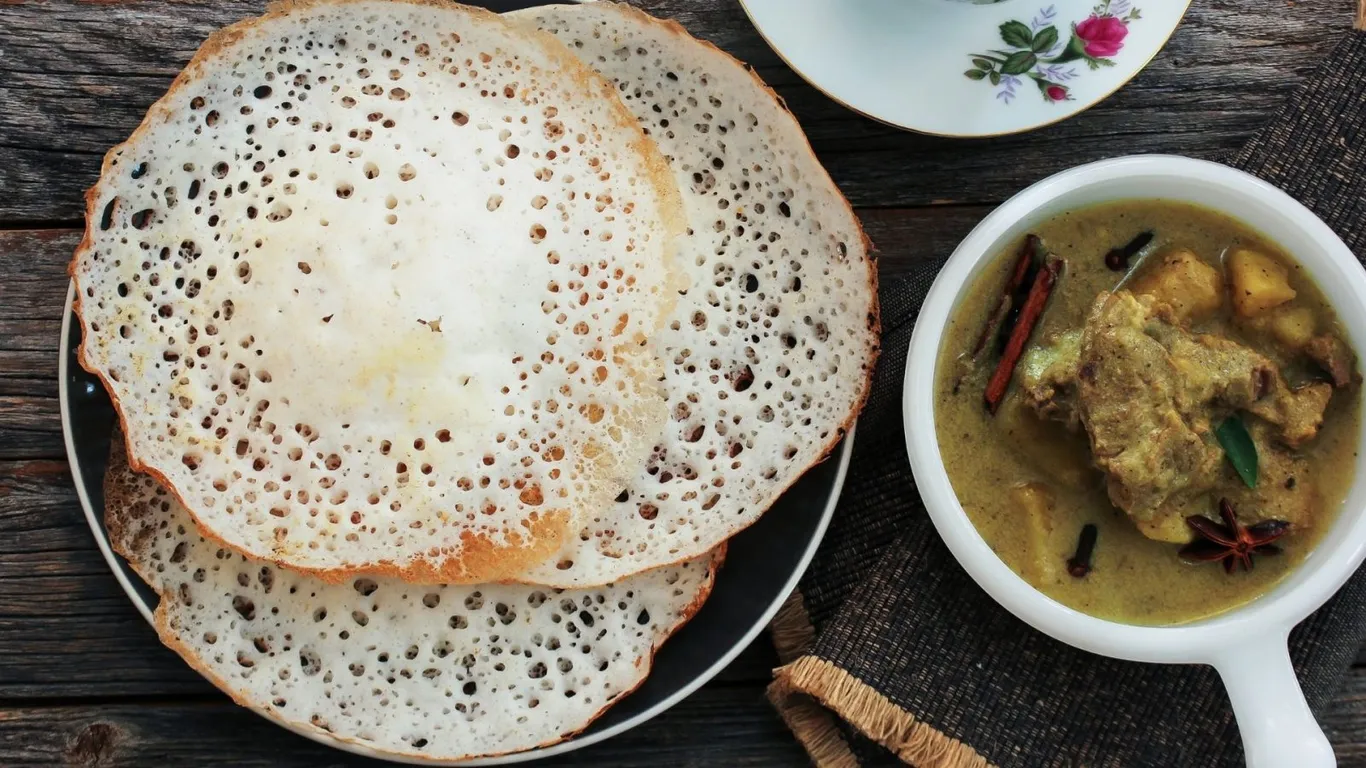
Appam and Stew - Syrian Christian Cuisine of Kerala
2. Geographical Diversity
Abundant Coastline: Kerala’s extensive coastline and backwaters significantly influence its rich seafood cuisine. Staples like fish curry, prawn fry, and crab roast highlight the region’s close connection to the sea, showcasing the freshness and variety of seafood available.
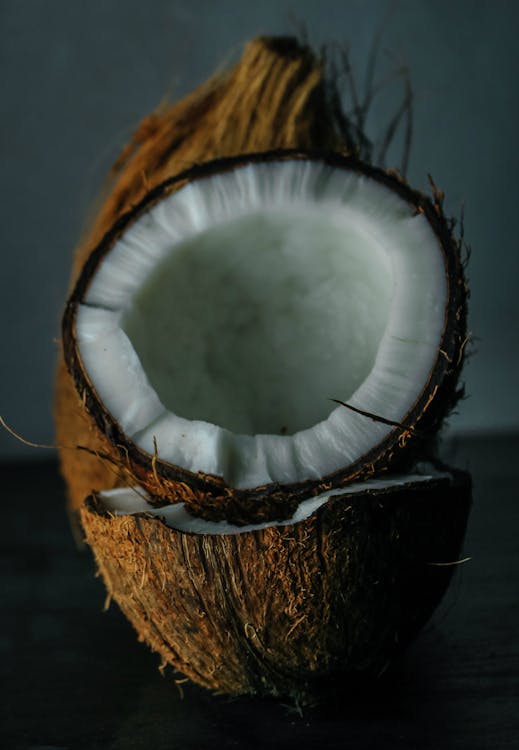
Land of Coconuts - Kerala!
Fertile Lands: The tropical climate and fertile soil of Kerala support the growth of coconut, bananas, and a variety of vegetables, which are central to its cuisine. The ubiquitous use of coconut in its various forms (milk, oil, grated) is a hallmark of Kerala dishes, reflecting the region’s agricultural bounty and culinary traditions.
3. Cultural Traditions
Festivals and Feasts: Food is central to Kerala’s festivals, serving as a medium of celebration and cultural expression. The Onam Sadhya, a grand vegetarian feast served on banana leaves, epitomizes the region’s agricultural bounty and communal harmony. This elaborate meal includes dishes like avial, sambar, and payasam, showcasing a variety of flavors and textures. The Vishu feast, featuring dishes like Vishu kanji (rice porridge) and ada pradhaman (rice flour-based dessert), also highlights seasonal produce and traditional recipes.
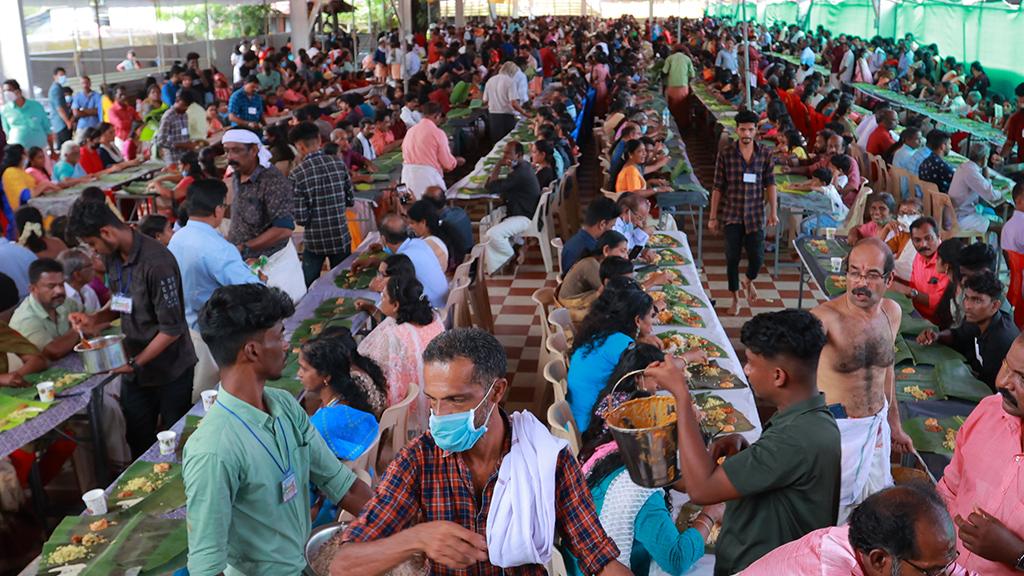
Onam Sadhya - Community Feast.
Religious Observances: Kerala's culinary traditions are deeply intertwined with its diverse religious practices. Muslims celebrate Eid with sumptuous biryanis, mutton roasts, and sweet treats like mutta mala (egg-based dessert). Hindus, during festivals like Vishu and Thiruvathira, prepare elaborate vegetarian feasts. Thiruvathira is marked by dishes like koottu curry (mixed vegetable curry) and puzhukku (boiled root vegetables). Christian festivities, particularly among the Syrian Christians, feature dishes like appam (rice pancake) with chicken stew, reflecting a blend of local and Western culinary influences.
4. Social Structures
Economic Stratification: The cuisine varies across different economic classes, showcasing the region’s social structure. Wealthier families might prepare elaborate meat and seafood dishes, while poorer households rely more on staple foods like tapioca and rice. Infact, tapioca, too, has an interesting historical influence. This root vegetable was introduced in Kerala by the Portuguese traders and eventually it became the staple food of the lower class and lower middle class people during the famines when these people had no access to rice.
Communal Dining: Traditional meals in Kerala, such as the Sadhya, embody the spirit of communal dining and social equality. During festivals like Onam, people from all walks of life sit together on the floor, sharing the same banana leaf spread with a variety of dishes. This practice reinforces social bonds and underscores the community's value of inclusivity.
The Sadhya is a vegetarian feast comprising around 24-28 dishes, including staples like rice, sambar, avial, and various pickles and chutneys. The meal often ends with a variety of payasams, sweet puddings made with rice, lentils, or fruits, symbolizing a sweet conclusion to the gathering.
The communal aspect of the Sadhya is significant. The act of eating together, irrespective of social status, promotes a sense of unity and equality. Each person receives the same food, highlighting the cultural belief in sharing and mutual respect. This tradition is a profound reflection of Kerala’s rich cultural ethos, where food serves as a powerful connector among people.
5. Culinary Techniques
Traditional Cooking Methods: The use of clay pots, stone grinders, and wood-fired stoves connects modern-day Kerala to its historical roots. These methods are not only about taste but also about preserving cultural practices.
Flavor Balancing: The art of balancing spices and flavors in Kerala cuisine reflects a deep understanding of culinary science and tradition, with each dish carefully crafted to achieve harmony.
6. Culinary Innovation
Adaptation and Fusion: Kerala’s cuisine is dynamic, adapting to new influences while preserving traditional flavors. Dishes like the Malabar biryani and Kerala-style roast chicken show how local ingredients and techniques blend with foreign influences.
Local Ingredients: The focus on fresh, locally sourced ingredients highlights Kerala’s agricultural practices and respect for sustainability and seasonality.
7. Symbolism and Meaning
Spiritual Significance: Many foods hold spiritual or symbolic meaning in Kerala. The offering of Prasadam in temples, which often includes sweet or savory dishes, signifies the importance of food in religious rituals.
Health and Wellness: Traditional Kerala diets incorporate Ayurvedic principles, emphasizing the medicinal properties of spices and herbs, and reflecting a holistic approach to health and wellness.
Kerala’s cuisine is a rich tapestry woven from historical influences, geographical diversity, cultural traditions, and social practices. By exploring Kerala’s food, one gains deep insights into its heritage, values, and way of life. The vibrant flavors, traditional cooking methods, and communal dining experiences all serve as windows to understanding the essence of Kerala’s culture.


The Story of Wonderwerk: From Concept to Creation
How tapioca became Kerala's symbol of food sustainability
Beyond Karimeen Pollichathu: 5 Traditional Spicy Fish Dishes from the Kumarakom Backwaters of Kerala That Celebrate The Culinary Diversity of Kerala